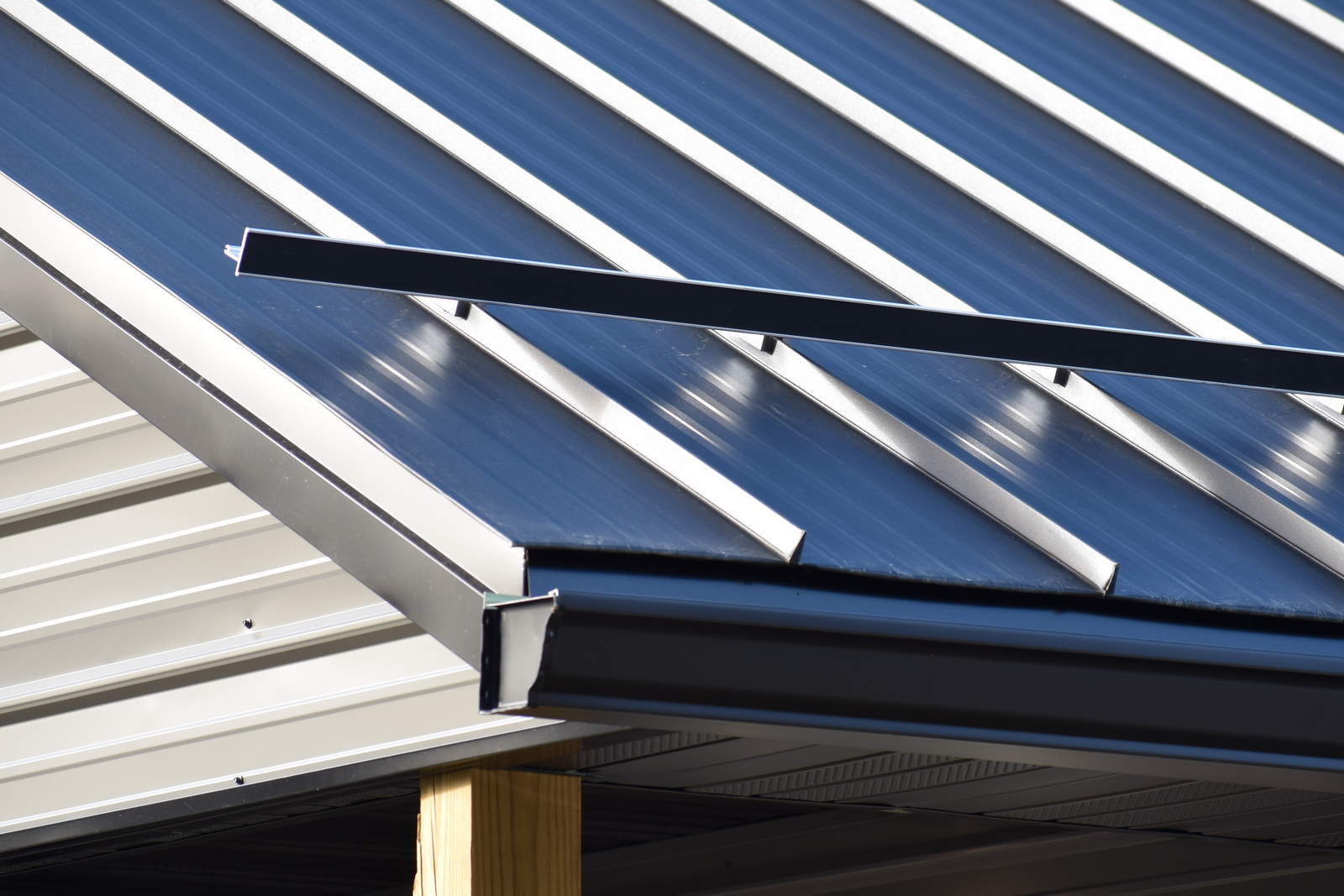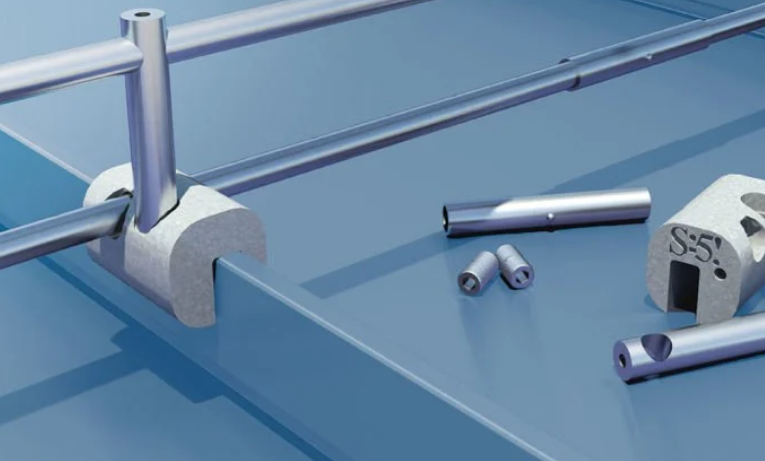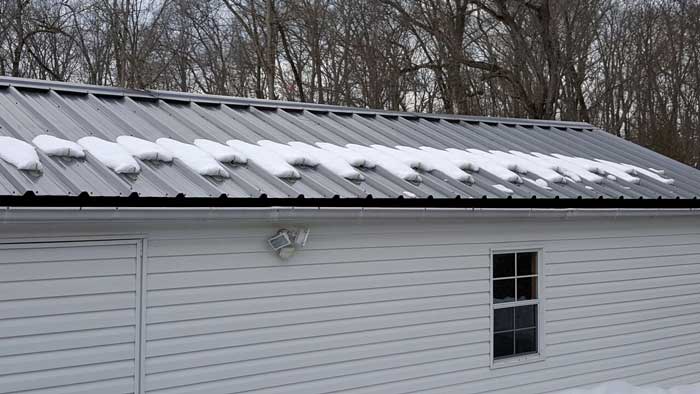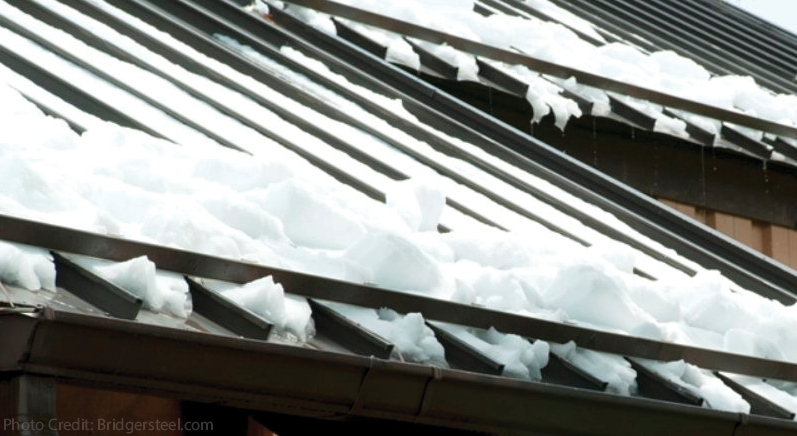Metal Roof Snow Guards: What are they, and Does My Roof Need Them?
If you happen to live in a cold weather climate, it’s likely that snow is something you encounter every winter. Although your area could be one that merely receives an occasional snowfall, having a metal roof in climates where snow is a possibility suggests that you’ll want to protect not only your building, but also yourself from falling snow or ice from the roof.
All American Steel not only manufactures both Standing Seam and Exposed Fastener panels and accessories, but they also provide the proper snow retention system components needed to keep your property safe.
What Is A Metal Roof Snow Guard?
Snow guards may also be known as a snow retention system, or sometimes, a snow brake. The snow guard is a device that regulates the snow from falling off your metal roof in an avalanche. An avalanche could be a dangerous situation to people, personal property, nearby parked vehicles, or other nearby structures if a large amount of snow and ice dropped off the roof at one time. An asphalt shingle roof has an abrasive surface, which keeps the snow on the roof. The sleek, glossy surface of a metal roof does not keep snow on top. In order to do this, a snow guard system is applied to prevent it from falling. The guards hold the snow on top, so it can completely melt first, controlling the speed and amount of snow that comes off the roof at one time.
Should My Metal Roof Have Snow Guards?
Any area that receives moderate to heavy snowfall should have snow guards installed on a metal roof. If your area doesn’t necessarily receive heavy snow but does get some snowfall throughout the year, a snow retention system is still recommended.
As previously mentioned, metal roofing has a slippery surface, making it easier for the snow to slide off the roof. While this seems like a more convenient route and less of an expense for installation and materials, not installing the snow guards is likely to be more dangerous.
Not only do snow guards help prevent a roof avalanche, but they also help with snow load by avoiding roof cave-ins since the weight of accumulated snow on your roof is more evenly distributed.
What are the Different Types of Snow Guard?
- Bar Style
- Fence Style
- Pad Style
Bar Style Snow Guard

A bar style snow guard features a horizontal metal bar that runs the span length of the roof’s eaves. Acting as a barrier to snow and ice, the bar stops the snow in its tracks from a major avalanche. Bar style snow guards, such as ColorGard by S5! are the most popular type of snow retention system, having superior performance. A major bonus, though, is its well-designed appearance.
Bar Style Snow Guards Are Attractive
ColorGard snow bars are manufactured to match the color you’ve selected for your metal roof. The way this is done, is a narrow section of matching painted metal is cut to size, and then inserted into a channel on the rail, which is connected to the front of the snow bars. This allows the snow guards to not only match the roofing’s color, but also blend in and not diminish the beauty of your metal roof.
The bar style snow guard also has a cleaner look as they generally only have one row. Additional rows of bars can be added if necessary though. Roof pitch and snow load should be considered first in order to determine if the roof needs additional bars.
Fence Style Snow Guard

S-5! Snow Fence Style – SnoFence by S-5!
Snow fences are a metal roofing snow retention system that feature vertical tubes acting as a fence, to barricade the snow from falling off the roof. These systems, including the SnoFence™ by S5! are mechanically attached with clamps, and have increased strength as opposed to adhesively-mounted systems. There is no penetration with screws through the panel surface. The SnoFence™ is offered in aluminum or brass material, but may not be as appealing in appearance as a single bar-style snow guard.
Standing Seam Snow Guards And Fences Don’t Penetrate Surface
Standing seam roofing can have snow guards or fences installed without having to create holes through the panel surface. This is accomplished by using mounting clips that attach to the side lap of the standing seam panel. The snow guards will then attach directly to the clip without penetrating through the metal panel – whereas any penetrations would result into opportunities for water to get through and create a leak. Snow fences also have flexibility in their design as these fence systems can be designed specifically for the structure it’s being used on. See the illustration below to find out what a snow fence system looks like.
Pad Style Snow Guard

Pad style snow guards are small devices made of plastic, metal, or stainless steel that are installed in multiple rows across a roof. They are not a continuous set of snow guards running across a roof. They are installed either by being adhesively mounted to the roof panel, or by being mechanically fastened down with screws penetrating through the panel surface.
Advantages of Pad Style Snow Guard Systems
- Less Installation Expenses
- More Affordable than Rail or Fence Style
Pad style snow guards are the most economical choice for a snow retention system. The adhesive installation method for pad style snow guards is less labor intensive, compared to rail or fence style snow guard systems. However, you have to make sure they are installed in the right locations on the roof to ensure they function correctly. This is very important, because if you’re using a screw fastening application, once the holes penetrate through the roof, you cannot undo it.
Disadvantages of Pad Style Snow Guard Systems
- Less Effective Compared To Rail or Fence Style
- Adhesive Can Fail
- Creates Penetrations In Roof Surface
Pad Style is Less Effective
Pad style snow guards are known to be less effective at catching snow compared to other snow retention systems. The pads are not placed continuously across the roof, creating gaps where there is plenty of space for chunks of snow and ice to still pass through.
Pad Style Snow Guard Adhesives Can Fail
It’s a given that anything installed with an adhesive is easier to install, it is also a less effective method when it comes to function. Over time, pressure against the pads will loosen the adhesive, which could eventually lead to adhesive failure, and pads falling off the roof. Adhesive failure is not uncommon, and results in snow guards no longer being able to perform correctly. This could also damage the paint of the metal roofing panels as the adhesive is peeled off of the surface.
Pad Style Creates Penetrations Through a Roof Surface
If you choose to mechanically fasten down pads with screws instead of using a non-penetrating adhesive, the roof will be vulnerable to leaks. This is because the holes that the screws create can be entry points for water to seep through. For exposed fastener roofing though, the panels are already attached using penetrating screws, so it can be done correctly, but adding more holes will only increase the potential risk of moisture penetration and eventual leaks.

The Pad Style of Snow Guard has an alternating pattern, and some snow may fall through as the depth increases.
Have you Decided Now?
If you live in an area prone to frequent snowfall and have a metal roof, we strongly recommend you consider adding snow guards. All American Steel offers snow retention systems that can be easily installed on a standing seam or exposed fastener metal roof.
Contact the team at All American Steel today on our website or by calling 608-377-7200 and get an estimate on materials for both an exposed fastener system and standing seam / concealed fastener system. We can do the design work, renderings, materials lists, provide the materials, and handle delivery to the jobsite. You can also visit our display at the All American Do it Center home improvement stores in Tomah, Sparta, or Richland Center Wisconsin.
Contribution: Western States Metal Roofing

